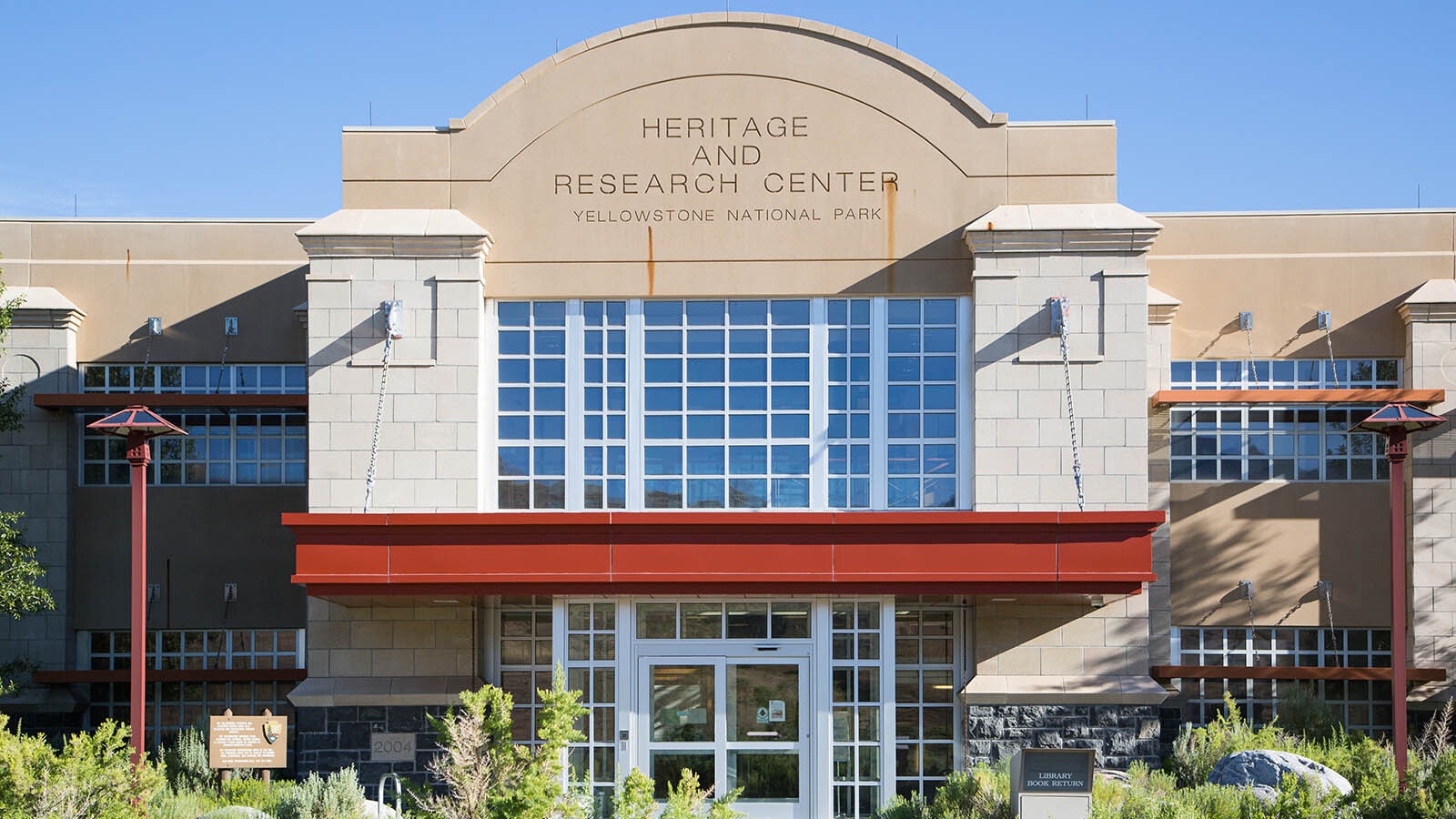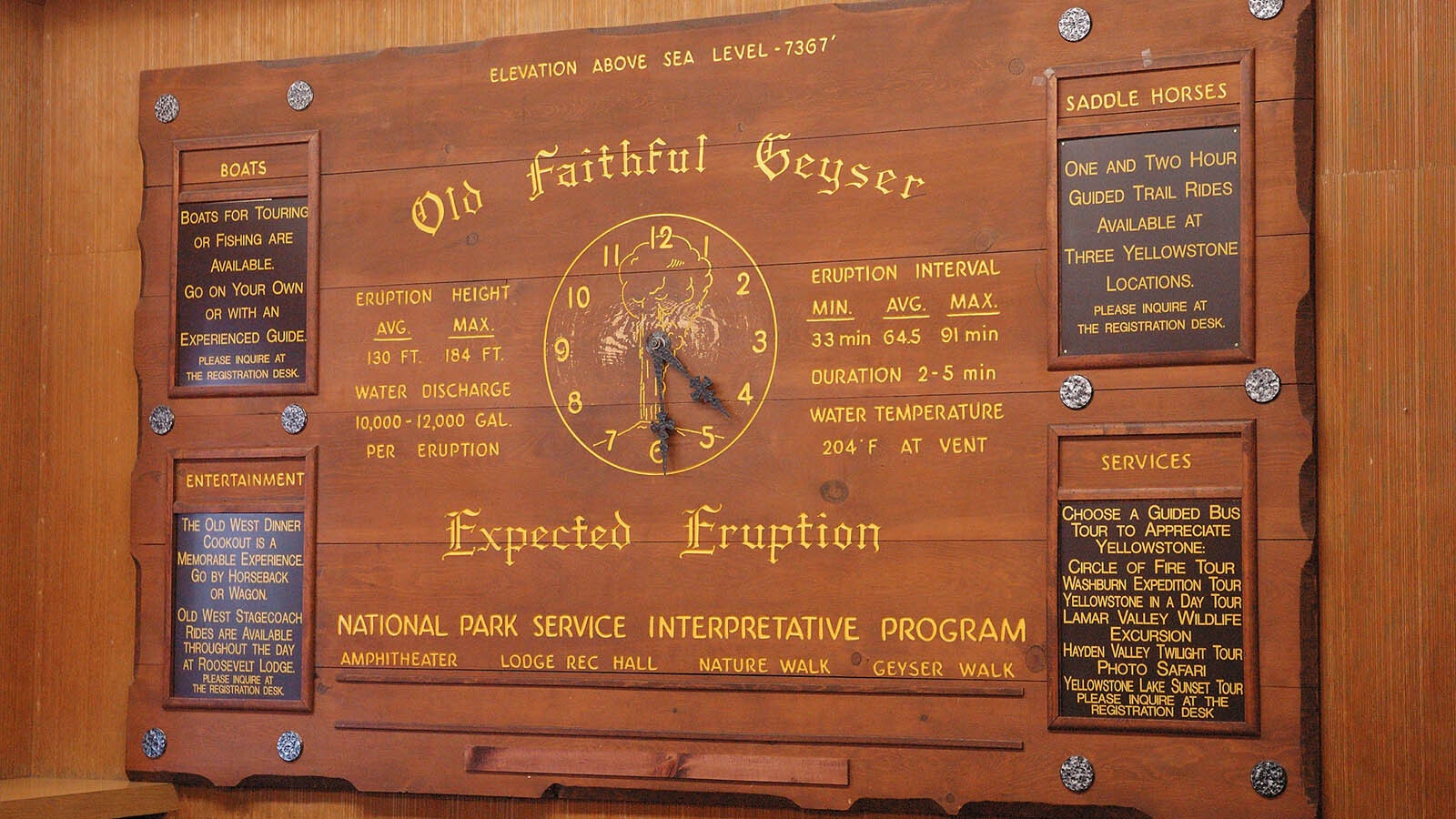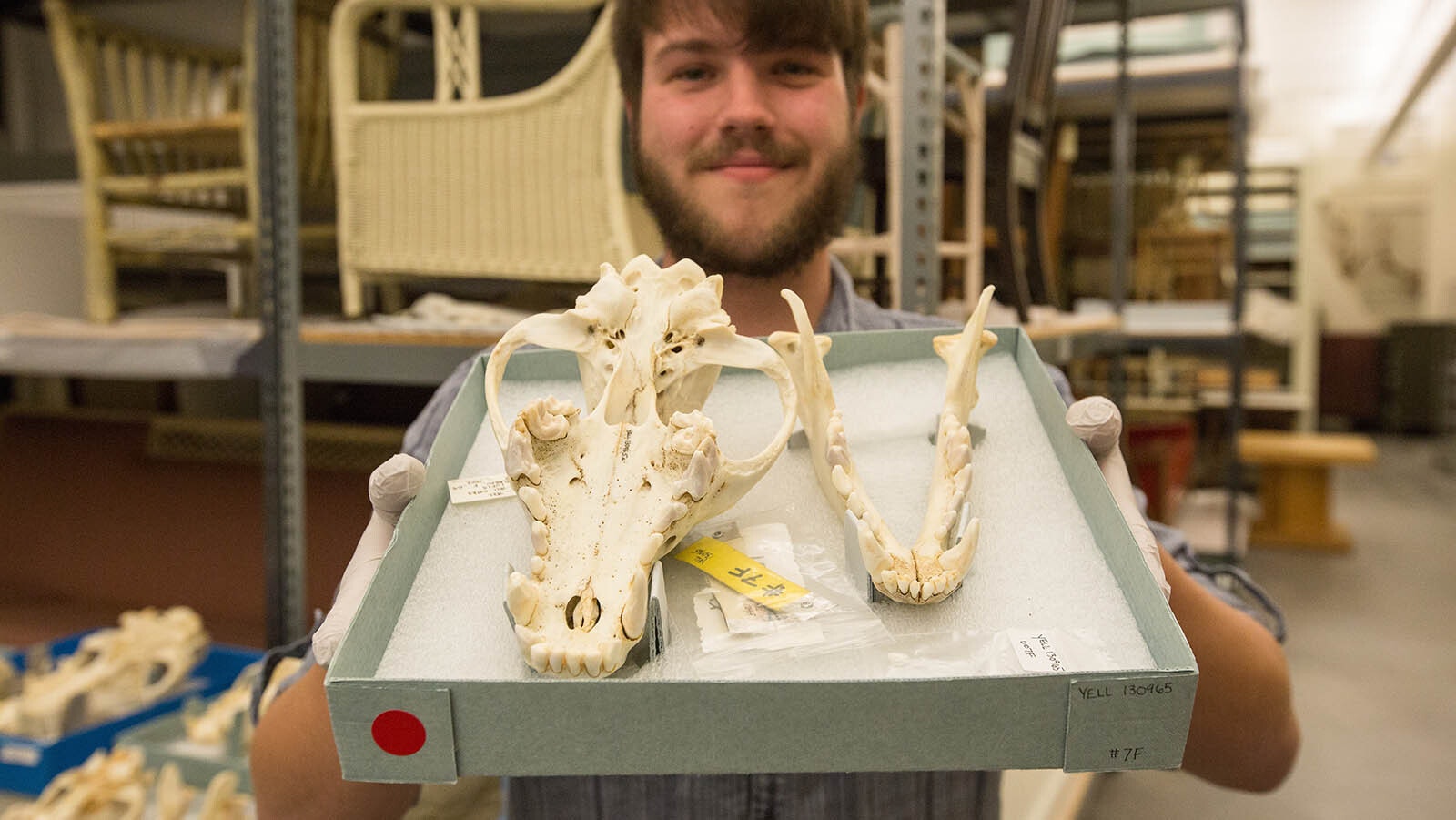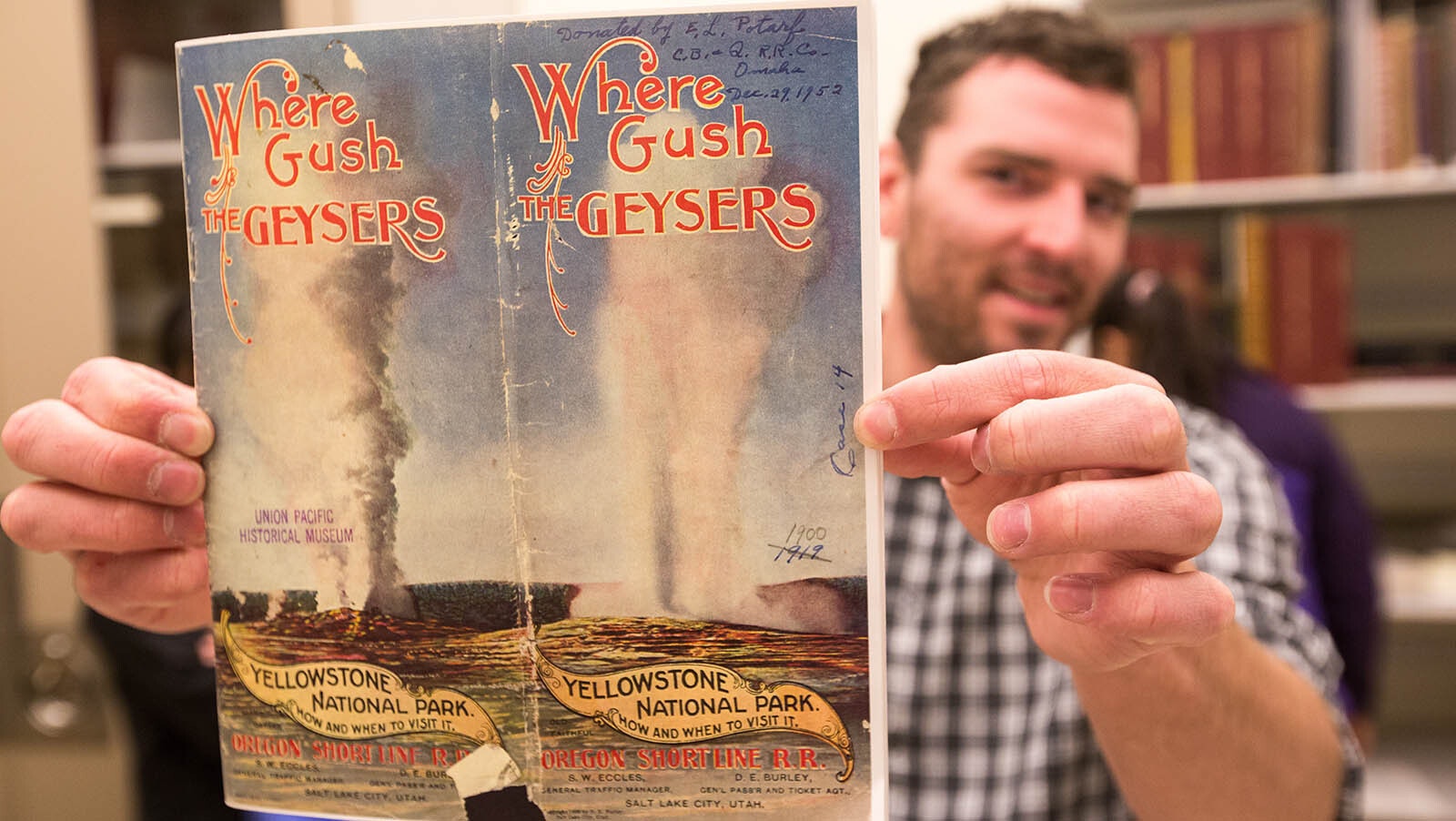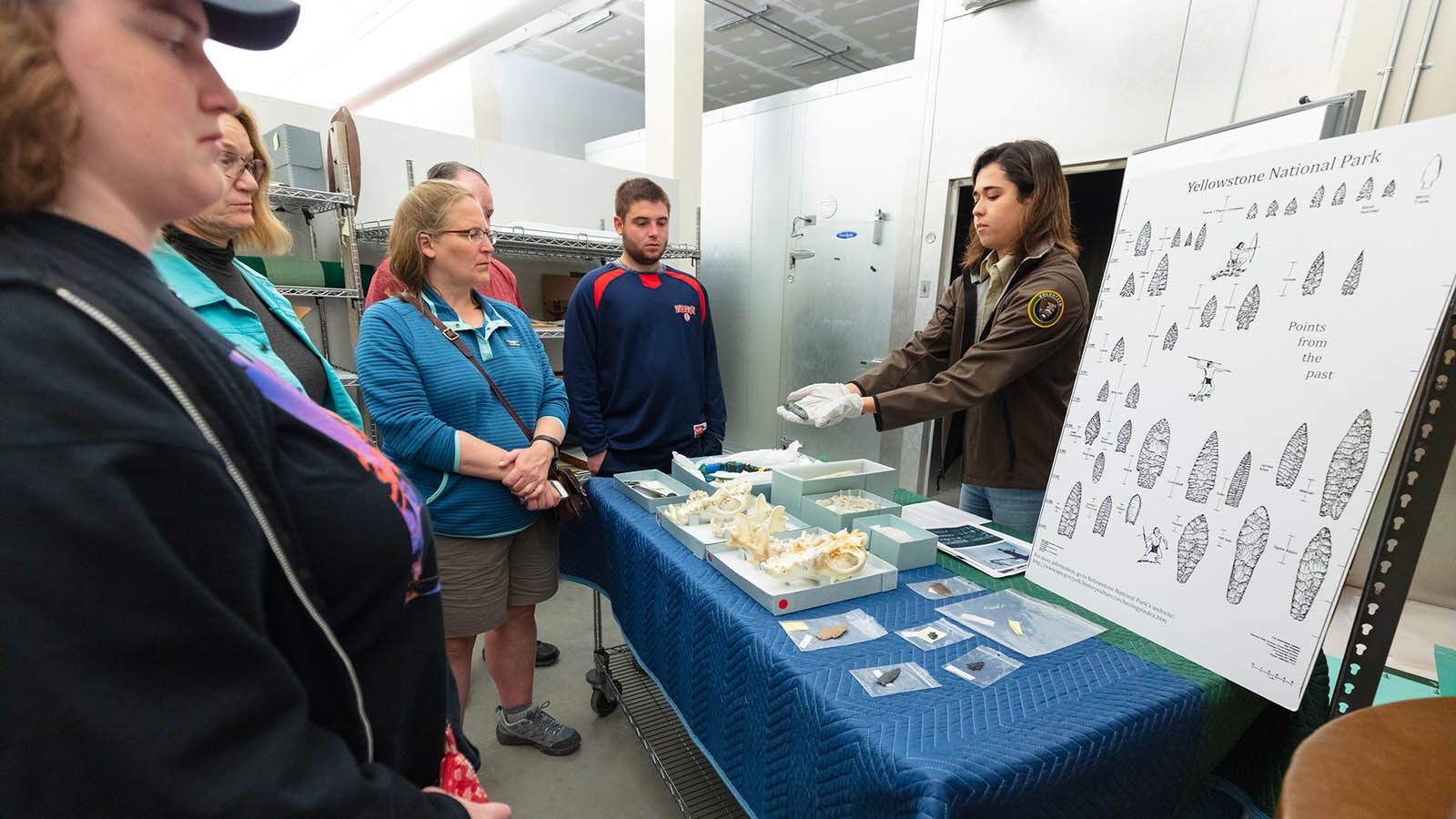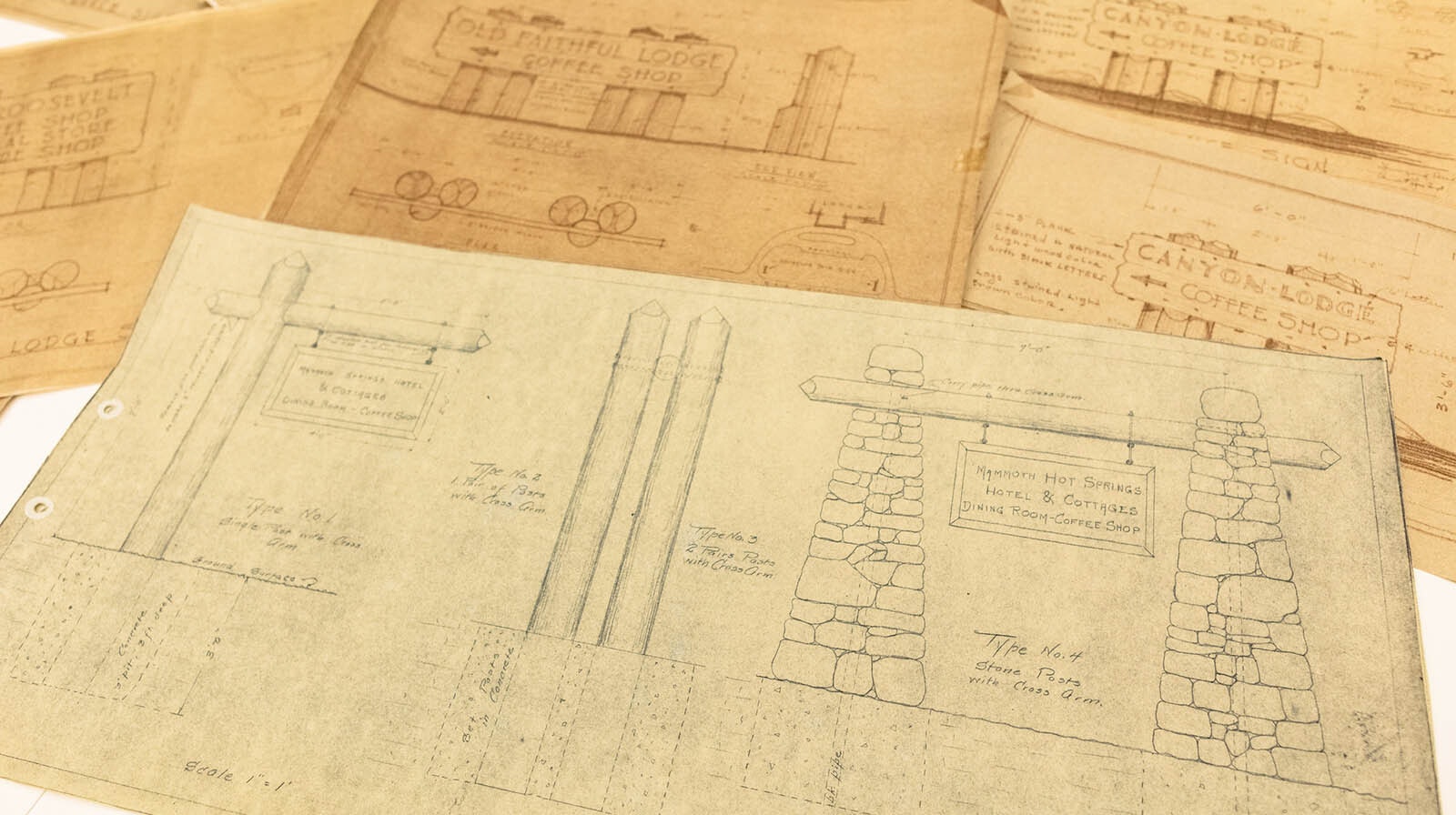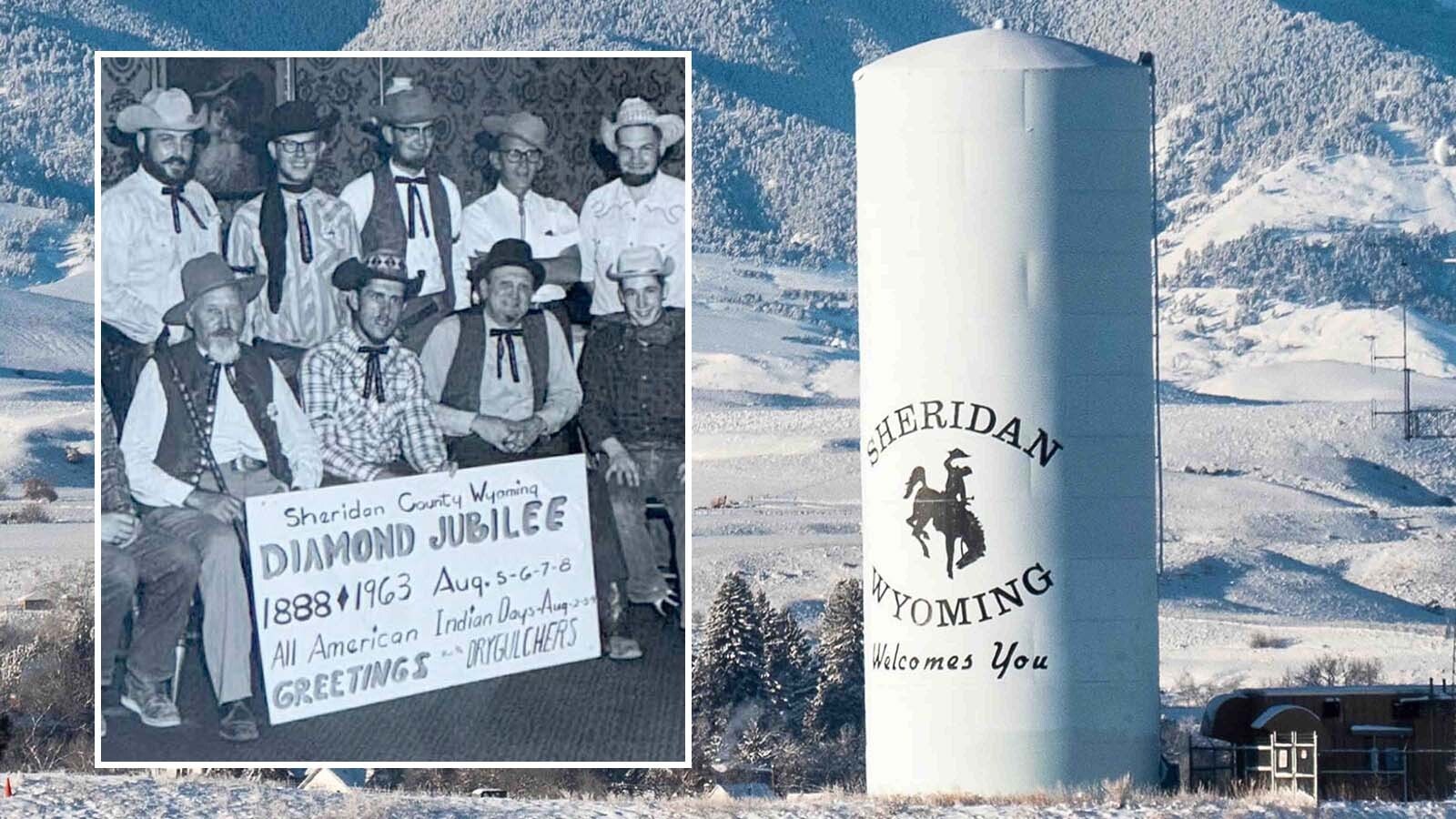Visitors stepping into the Old Faithful Lodge in Yellowstone National Park nearly a half century ago could get all the information about the world’s most famous geyser they wanted — and much more — from a large wood-panel sign near the lodge’s registration desk.
The central feature of the sign is an analog clock with moveable hands to indicate when the geyser was next expected to blow.
The sign has long been removed, but continues to provide valuable information in a climate-controlled environment in Gardiner, Montana.
Yellowstone’s landscape preserves much of its natural history. For everything else, there’s the Yellowstone Heritage and Research Center.
The Old Faithful Geyser Expected Eruption sign is now a permanent piece of the center’s vast collection of historical artifacts and information. Most visitors haven’t seen the sign in nearly 50 years, but it’s far from outlived its usefulness.
Pieces Of Park History
In a way, the sign is a fitting metaphor for the Yellowstone Heritage and Research Center, which is a museum, archive and library managed by the National Park Service.
“We are the repository for the museum archives and library collections for the world's first national park,” Marian Watson, supervisory museum curator at Yellowstone National Park, told Cowboy State Daily. “We have climate control security and appropriate housing for our collections to preserve them in perpetuity.”
The artifacts preserved by the center include one of the largest collections of wolf skulls in the world, the sketches and personal effects of legendary painter Thomas Moran, and an extensive collection of Yellowstone vehicles and stagecoaches.
Signage from the park’s past is another essential part of the center’s collection. With just a glance at the Old Faithful Geyser Expected Eruption sign, Watson knows why the sign is being preserved.
“This sign is really beautiful,” she said. The Park Service “tries to make things blend into the environment and look natural. So, it's made from the same materials.”
There’s much to appreciate about the sign as an artistic and historic object. Those are also the same qualities that explain why it’s no longer at Old Faithful Lodge.
Up And Outdated
After 50 years, a lot has changed in the Old Faithful Geyser Basin. Despite this, much of the information on the 1970s Old Faithful Geyser Expected Eruption sign is still reasonably accurate.
Like a Swiss Army knife, it gives visitors all the Old Faithful Geyser basics at a glance — how high it erupts (130 feet average, 184 feet max), with how much water (10,000 to 12,000 gallons), how long between eruptions (33-91 minutes) and how hot the water is (204 degrees).
Those numbers aren’t far from today’s statistics of 204 degrees at the vent, an average height of 145 feet and a water discharge between 3,700 and 8,400 gallons.
While the information on the sign isn’t quite so outdated, its presentation is. Watson noted the inherent beauty of the historic sign partly explains why it ended up in the center’s collection.
“It has some nice font and script on it,” she said. “Today, that font probably wouldn't be used. We would use a font that's more accessible and easier for visitors to read.”
And there’s a lot to read. In addition to the geyser factoids, there’s information on touring and fishing boats, entertainment in the area, NPS interpretive programs and where to sign up for a saddle horse ride.
Watson said that’s a lot of words and numbers for a single sign.
“Nowadays, we wouldn't have as much information on a sign,” she said. “We'd have a lot of that information on different signage or paper that we hand out to folks that are visiting.”
There was a time when signage was “one-stop shopping” for visitors, but those days are long past. In Watson’s experience, visitors unknowingly influence these changes.
“We know people's attention span and what they're willing to look at,” she said. “If we're trying to provide the best information to the most people, you whittle that down and have less information on a sign and additional information that you can hand out if (anyone) have specific questions.”
On The Clock
The entire sign is built around the most common question Old Faithful visitors have always had: When will it erupt?
It’s well documented that Old Faithful has gotten “less faithful” over time. The recorded eruption frequency of every 60 to 70 minutes in the 1870s has transitioned to an average of every 98 minutes in 2023 for reasons only known to Yellowstone.
The simple Old Faithful clock with moveable hands on the 1970s sign probably worked perfectly well then. Today, the same job is accomplished just as well (though perhaps not as artistically) with dry-erase markers and whiteboards.
Analog clocks themselves have become something of a historical relic. And yet Old Faithful keeps going off.
Every Old Is New Again
The Old Faithful Geyser Expected Eruption sign at the Old Faithful Lodge served its purpose well, but as times changed, it was changed out. That’s precisely why it’s become a permanent addition to the Yellowstone Heritage and Research Center collections.
“It shows us how we communicated with visitors over time,” she said. “It's neat to see the changes in how we share information and what people want to know when they walk in the door.”
An undervalued aspect of historical conservation is nostalgia. The Yellowstone experience of the 1970s may have vanished over time, but the Yellowstone Heritage and Research Center ensures elements of everyone’s experience are permanently preserved for future generations.
Watson gets the allure of old Yellowstone signs and knows park visitors have similar feelings evoked by these seemingly menial relics of the past.
“I imagine a lot of visitors would love to see all the different signs over time,” she said. “That's why we preserve them, as well.”
Andrew Rossi can be reached at: ARossi@CowboyStateDaily.com
